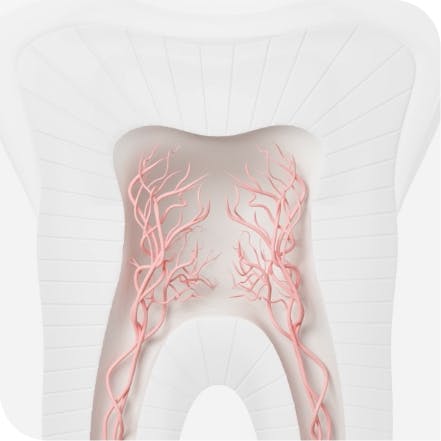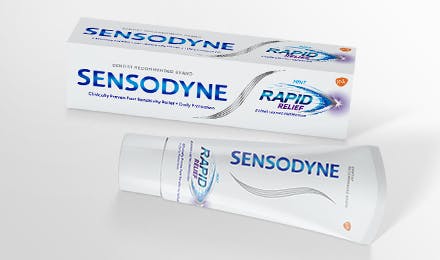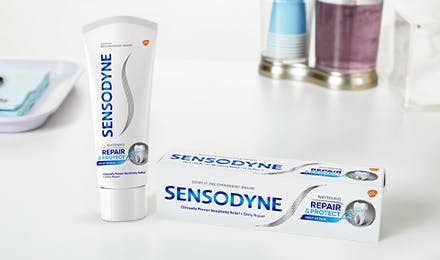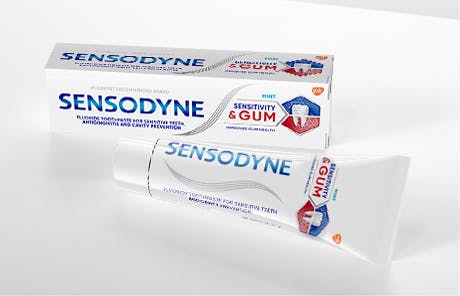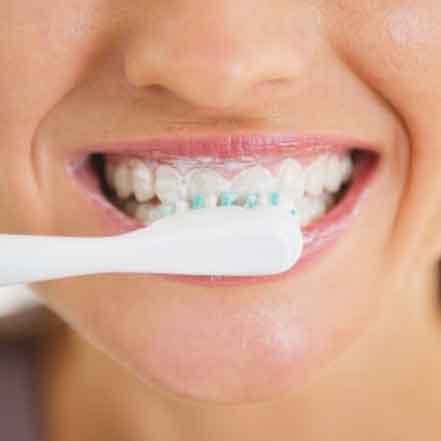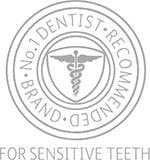What is Plaque? What Causes Plaque Buildup

Plaque is a sticky film of bacteria and microbes that constantly forms on your teeth; if it’s not removed with proper oral hygiene, it can lead to tooth decay, gum disease and even more serious dental problems.1,2 Understanding what plaque is and the risks it poses is essential for maintaining a healthy smile.
Key Takeaways
- Plaque is a sticky layer of bacteria that can damage teeth and gums if not removed daily.1
- Untreated plaque can harden into tartar, leading to tooth decay, gingivitis and advanced gum disease.1,2,4
- Brushing twice daily, flossing, and using a fluoride toothpaste like Sensodyne can help prevent plaque buildup.6
What is Plaque?
Plaque is a sticky film that covers your teeth and sits along your gumline and can contribute to tooth decay and gum disease.1 This sticky film is made up of many different types of microbes that are already present in your mouth: bacteria, fungi and viruses.1,2 Some of these microbes are harmless—even beneficial—while others can lead to tooth decay and gum disease.1,2
How Does Plaque Buildup Affect Your Mouth
When you eat or drink, the bacteria within plaque on your teeth produce acids that break down sugar from food particles. These acids affect the hard outer layer of your teeth, the enamel, and can weaken it.3
Plaque tends to collect around the gumline and on the chewing surfaces of your rear molars, which makes these areas particularly vulnerable to issues like tooth.3
Plaque Can Cause Tooth Decay Symptoms
Repeated acid attacks due to plaque bacteria can eventually lead to tooth decay.1 Early tooth decay may not cause noticeable symptoms, but advanced decay can present with the following signs:3
- Discomfort in and around your mouth
- Difficulty biting down on some foods
- Sensitivity to hot, cold or overly sweet foods
- Food consistently trapped between teeth
- Bad breath, or halitosis
Plaque Buildup Can Lead to Gum Disease
Dental plaque that us not regularly removed can lead to gum disease, the early stages of which are called gingivitis, which can affect various areas of the mouth:4,5
| Affected Area | Symptoms |
| Gums | May be red, swollen or tender May bleed during brushing or flossing May pull away from the teeth – making teeth appear longer |
| Teeth | May become loose or sensitive Pain while chewing |
| Other | Persistent bad breath |
Plaque vs Tartar: What’s the Difference?
Plaque that is not removed through proper oral hygiene, like daily brushing and cleaning between teeth, can eventually harden into a substance called tartar or dental calculus.1 When plaque hardens into tartar, it can only be removed by a dental professional during a professional cleaning.4
What Can Happen if Plaque or Tartar Isn’t Properly Removed?
Plaque that isn’t removed can harden into tartar, which can only be removed by dentist or dental hygienist, but when this doesn’t regularly happen, both tooth decay and gum disease may progress.1,2,4
Results of Advanced Tooth Decay
If not addressed, advanced tooth decay can result in the loss of your tooth.3 The bacteria causing the decay may travel through your tooth and develop into an infection called an abscess under your gums.3
From there, the infection may spread to other parts of your body with serious health consequences.3 Caring for your teeth is an important part of caring for your whole body.
Advanced Gum Disease
Untreated gingivitis can progress to periodontitis, a more serious form of gum disease.5 In periodontitis, the gums can pull away from the teeth and form pockets that become infected.5 Without proper treatment, the gums, bones and connective tissues that support your teeth and keep them where they are in your mouth can be destroyed.5
How to Prevent Plaque
Good oral health and dental hygiene help you enjoy life.6 Learn how to remove plaque from your teeth and how to prevent it from hardening into tartar with these guidelines:6
- Brush your teeth twice a day for two minutes each time to remove plaque buildup that can lead to tooth decay and gum disease
- Use a fluoride toothpaste and angle the toothbrush toward your gumline so that the bristles clean between the gums and teeth
- Clean between your teeth once a day with floss or another interdental cleaner to remove additional plaque buildup
Choosing the right toothpaste can make a difference in your oral health, too, especially since sensitivity and gum disease can coexist. Sensodyne Sensitivity & Gum Mint toothpaste provides dual action for sensitivity and gum problems thanks to a clinically proven ingredient to target the cause of early gum problems and bleeding gums.* It targets and removes the plaque bacteria associated with gingivitis to improve gum health.
By properly caring for your teeth, you can prevent the buildup of plaque that leads to tooth decay, sensitivity and gum disease.
*with twice-daily brushing
Source Citations:
- Plaque. MouthHealthy by ADA. https://www.mouthhealthy.org/all-topics-a-z/plaque. Accessed on 8/14/25.
- Dental plaque. JADA. https://jadafs.ada.org/article/S2772-414X(25)00009-X/fulltext. Accessed on 8/14/25.
- Tackling Tooth Decay. JADA. https://jada.ada.org/article/S0002-8177(14)60378-0/fulltext. Accessed on 8/14/25.
- Periodontal (Gum) Disease. National Institute of Dental and Craniofacial Research. https://www.nidcr.nih.gov/health-info/gum-disease. Accessed 8/14/25.
- Gum Disease. Medline Plus. https://medlineplus.gov/gumdisease.html. Accessed 8/14/25.
- Oral Hygiene. National Institute of Dental and Craniofacial Research. https://www.nidcr.nih.gov/health-info/oral-hygiene. Accessed 8/14/25.
